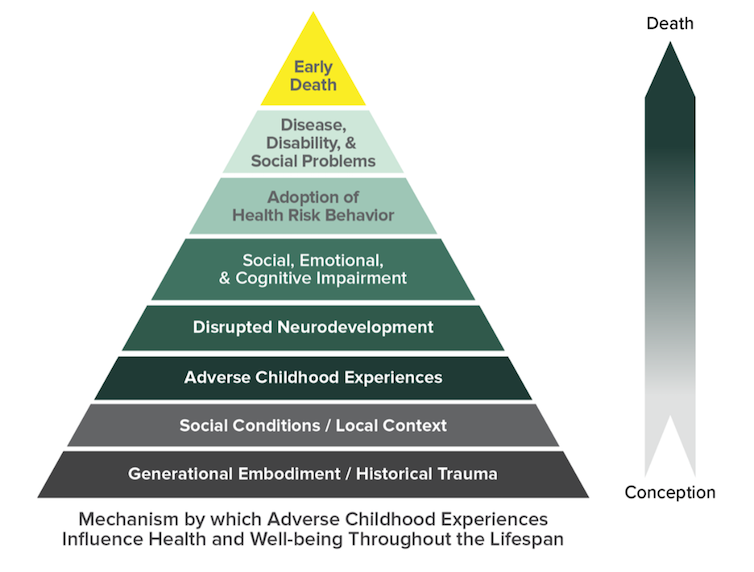The lyrics, which were based on actual occurrences, shed light on the tragic cycle of poverty, abuse, substance misuse, and the absence of social resources for those who are most vulnerable. They force us to consider how we may support Brenda-type kids who have experienced such trauma repeatedly while also acknowledging how it affects the people we interact with every day. As a pediatric resident doctor, I frequently see patients who have experienced abuse, drug use, insecure housing, and other complex and exploitative social and personal situations. These elements, which some people may not believe to be “medically” related, have profound and long-lasting effects on both physical and mental health.
The World Health Organization defines social determinants of health as the “conditions in which people are born, grow, work, live, and age,” and exposure to ACEs can have a major impact on children’s development and health.
Exposure to ACEs is linked to psychological problems like depression, anxiety, and PTSD as well as various health problems including chronic pain, obesity, and heart disease. It is also linked to physical damage like burns and traumatic brain injuries.
Beyond physical health issues, ACEs are linked to dangerous behaviors like unsafe sex as well as negative social outcomes like lower income and education levels. Persistent stress can lead to an allostatic load, also known as “wear and tear,” on the body.Exposure to these harmful elements is incredibly widespread. According to a recent Canadian study, more than 60% of adults reported having at least one ACE as a child and more than one-third having two or more. One in seven Canadians live in poverty, which is a significant social predictor of health. During the COVID-19 epidemic, about 15% of Canadians reported experiencing food insecurity.
In high-income nations, social determinants of health contribute to stark differences in health outcomes. For instance, Baltimore’s poorest neighborhoods have newborn mortality rates that are ten times greater than those of the city’s wealthier neighborhoods and comparable to those of the West Bank.





